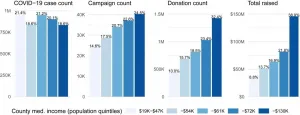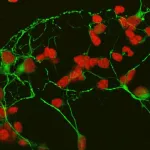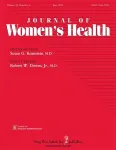INFORMATION:
About the BATS study
Soon after MIS-C was first recognised in April and May 2020, the research team at Imperial College London, headed by Professor Michael Levin, initiated an international study to identify the optimal treatment for this new disease. The study called "Best Available Treatment Study" (BATS) invited paediatricians worldwide to upload data from patients with MIS-C. The hypothesis underlying the study was that if a large enough number of patients were included and treated using whatever drugs individual paediatricians felt were beneficial, the outcome of children treated with different treatment regimes could be compared. Although randomised placebo-controlled trials provide the best evidence for benefit of any drugs, randomised trials take considerable time to develop and often require extensive funding. The speed with which the new disease was evolving made it unlikely that there would be information from such trials rapidly. As an alternative the BATS study utilised new statistical approaches to correct for any differences in severity or other confounding effects in order to compare the different treatments given to children with MIS-C.
The study compared the outcome of children with MIS-C treated with the three most common regimes: intravenous immunoglobulin (the proven treatment of Kawasaki disease), immunoglobulin combined with corticosteroids and corticosteroids alone. The study showed evidence that all three treatment regimes resulted in more rapid resolution of inflammation than in children who did not receive immune modulating drugs. No statistically significant differences were seen between each of the three treatments in either the rate of progression to organ failure or recovery from organ failure. More patients who were treated with a single agent (immunoglobulin or steroids) required additional treatment than those who were commenced initially on both drugs. In children whose condition met the World Health Organisation definition of MIS-C, there was evidence for more rapid improvement in organ failure in children receiving corticosteroids than those receiving immunoglobulin alone. The number of patients who developed coronary artery aneurysms in each of the three treatment groups were too low for firm conclusions as to the role of these drugs in preventing coronary artery aneurysms.
Corticosteroids may be an effective treatment for COVID-19 complications in children
Corticosteroids may be an effective treatment for children who develop a rare but serious condition after COVID-19 infection
2021-06-17
(Press-News.org) Corticosteroids may be an effective treatment for children who develop a rare but serious condition after COVID-19 infection.
This is the finding of an international study of 614 children, published in the New England Journal of Medicine, led by Imperial College London.
All children in the study developed a serious disorder following COVID-19 infection. This condition, called multi-system inflammatory syndrome in children (MIS-C), is thought to affect 1 in 50,000 children with SARS-CoV-2 infection.
The new disorder, which is also called paediatric inflammatory multi-system syndrome temporally associated with SARS-CoV-2 infection (PIMS-TS), affects children of all ages but is more common in older children and teenagers. The disorder generally occurs 2-6 weeks after infection with the SARS-CoV-2 virus.
The illness is characterised by persistent high fever, often accompanied by abdominal pain, vomiting, red eyes and red rash. Severely affected children have developed heart inflammation, with shock and failure of multiple organs.
Fortunately, with optimal treatment the majority of affected children have recovered well. However, worldwide most reports suggest a fatality rate of 2-4%.
An important concern has been that some affected children have developed inflammation of their arteries that supply the heart with blood (called coronary arteries), resulting in widening of these arteries. This is also known to happen in another condition called Kawasaki disease.
The new study, supported by the EU's Horizon 2020 programme, investigated two initial treatments for this condition: a type of steroid called corticosteroids (such as methyl prednisolone) and antibody treatment (called immunoglobulin). The antibodies come from human blood, and have been shown to reduce inflammation in the body. The study also compared initial treatment with steroids together with immunoglobulin.
The study involved hundreds of doctors worldwide uploading information about patient outcomes onto an online database, and was not a randomised controlled trial (see Notes to Editors).
All three treatments (immunoglobulin, immunoglobulin combined with corticosteroids and cortico-steroids alone) resulted in more rapid resolution of inflammation, as measured by the level of a protein that indicates inflammation levels in the body, called C-reactive protein (CRP).
The CRP fell by half approximately one day quicker in those receiving treatment. There were no clear differences between the three treatments in rate of recovery from organ failure, or progression to organ failure.
The number of fatal cases (2%) was too low to enable comparison between treatments, but death was included in a combined assessment with organ failure, which found no significant differences between the three treatments.
However, when analysis was restricted to the 80% of children who met the World Health Organization's criteria for MIS-C, there was evidence of a lower rate of organ support or death at 2 days in those receiving steroids alone as initial treatment, compared to immunoglobulin alone.
Dr Elizabeth Whittaker, one of the authors of the study from Imperial's Department of Infectious Disease, and one of the first doctors in the world to originally identify this condition, together with colleagues at Imperial College and Imperial College Healthcare NHS Trust, said: "The finding that outcome is similar for patients treated with steroids alone as with those treated with steroids and immunoglobulin or immunoglobulin alone, suggests that steroids may be a cheaper and more available alternative to immunoglobulin. Corticosteroids are cheap and available worldwide whereas immunoglobulin is expensive, and there is a worldwide shortage of it. This is a particular problem in many low and middle income countries. "
However the authors stress there is insufficient data to establish that all three treatments are equivalent in preventing coronary artery aneurysms. Around 6 per cent of children in the study suffered a coronary artery aneurysm.
Professor Michael Levin, from the Department of Infectious Disease at Imperial, who led the study, said: "The study has been a real example of international collaboration and the willingness of paediatricians in many countries to share their data and experience to enable important questions as to optimal treatment to be answered. Our finding, that treatments with immunoglobulin, steroids or a combination of both agents all result in more rapid resolution of inflammation (and have similar rates of progression to organ failure or recovery from critical illness), will be of great value to paediatricians worldwide in their treatment of children with this new disorder. As immunoglobulin is unavailable or in short supply in many countries, and is expensive, the findings of this study may provide some reassurance for those who only have access to corticosteroids, particularly in those countries with more limited resources.
However it is important to note that our study does not yet provide a definitive answer as to whether any of the treatments lowers the risk of coronary artery aneurysms, as the numbers with this complication were too low. The study is continuing to enrol patients and our planned further analysis with larger numbers of patients should provide answers to this question."
ELSE PRESS RELEASES FROM THIS DATE:
Pandemic-era crowdfunding more common, successful in affluent communities
2021-06-17
During the first several months of the pandemic -- when communities locked down, jobs were lost, PPE was scarce and store shelves were cleared --thousands of people turned to online crowdfunding to meet their needs.
But a new University of Washington analysis of requests and donations to the popular crowdfunding site GoFundMe, along with Census data, shows stark inequities in where the money went and how much was donated.
A study published June 15 in Social Science & Medicine found more than 175,000 COVID-19-related GoFundMe campaigns in the U.S., raising more than $416 million, from January through July 2020. Researchers found that affluent and educated ...
Scientists prepare for next coronavirus pandemic, maybe in 2028?
2021-06-16
'God forbid we need this, but we'll be ready'
Medication would be taken early in the disease, so you don't get as sick
Future drug could also treat common cold
CHICAGO --- Scientists are already preparing for a possible next coronavirus pandemic to strike, keeping with the seven-year pattern since 2004.
In future-looking research, Northwestern University Feinberg School of Medicine scientists have identified a novel target for a drug to treat SARS-CoV-2 that also could impact a new emerging coronavirus.
"God forbid we need this, but we will be ready," said Karla Satchell, professor of microbiology-immunology at Feinberg, who leads an international team of scientists to analyze the important structures of the virus. The Northwestern team previously ...
Underwater robot offers new insight into mid-ocean "twilight zone"
2021-06-16
An innovative underwater robot known as Mesobot is providing researchers with deeper insight into the vast mid-ocean region known as the "twilight zone." Capable of tracking and recording high-resolution images of slow-moving and fragile zooplankton, gelatinous animals, and particles, Mesobot greatly expands scientists' ability to observe creatures in their mesopelagic habitat with minimal disturbance. This advance in engineering will enable greater understanding of the role these creatures play in transporting carbon dioxide from the atmosphere to the deep sea, as well as how commercial exploitation of twilight ...
New models predict fewer lightning-caused ignitions but bigger wildfires by mid century
2021-06-16
CORVALLIS, Ore. - Human-caused wildfire ignitions in Central Oregon are expected to remain steady over the next four decades and lightning-caused ignitions are expected to decline, but the average size of a blaze from either cause is expected to rise, Oregon State University modeling suggests.
Scientists including Meg Krawchuk of the OSU College of Forestry and former OSU research associate Ana Barros, now of the Washington Department of Natural Resources, say the findings can help local decision-makers understand how a changing climate might affect natural and human-caused fire regimes differently and inform ...
Scientists unravel the function of a sight-saving growth factor
2021-06-16
Researchers at the National Eye Institute (NEI) have determined how certain short protein fragments, called peptides, can protect neuronal cells found in the light-sensing retina layer at the back of the eye. The peptides might someday be used to treat degenerative retinal diseases, such as age-related macular degeneration (AMD). The study published today in the Journal of Neurochemistry. NEI is part of the National Institutes of Health.
A team led by Patricia Becerra, Ph.D., chief of the NEI Section on Protein Structure and Function, had previously derived these peptides from a protein called pigment epithelium-derived ...
How sex trafficking trauma affects the way its survivors parent
2021-06-16
A study of young immigrant mothers who are survivors of sex trafficking found that the trauma affected how they parented: it made them overprotective parents in a world perceived to be unsafe, it fueled emotional withdrawal when struggling with stress and mental health symptoms, and was a barrier to building confidence as mothers. Yet, they coped with such challenges finding meaning in the birth of their child and through social support and faith.
Results of the community-based participatory research study by researchers at Columbia University ...
Alternate-day intermittent fasting leads to less fat loss than traditional daily energy restriction
2021-06-16
An alternate-day intermittent fasting schedule offered less fat-reducing benefits than a matched "traditional" diet that restricts daily energy intake, according to a new, 3-week randomized trial involving 36 participants. The study, which is one of the first to tease apart the effects of fasting and daily energy restriction in lean individuals, indicates that alternate-day fasting may offer no fasting-specific health or metabolic benefits over a standard daily diet. However, the authors caution that longer studies with larger groups are needed. Intermittent fasting, which involves cycling through voluntary fasting and non-fasting periods, has become one of the most popular approaches to losing weight. There ...
Subterranean investigations
2021-06-16
We've seen robots take to the air, dive beneath the waves and perform all sorts of maneuvers on land. Now, researchers at UC Santa Barbara and Georgia Institute of Technology are exploring a new frontier: the ground beneath our feet. Taking their cues from plants and animals that have evolved to navigate subterranean spaces, they've developed a fast, controllable soft robot that can burrow through sand. The technology not only enables new applications for fast, precise and minimally invasive movement underground, but also lays mechanical foundations for new types of robots.
"The biggest challenges with moving through the ground ...
Sex differences in COVID-19 outcomes
2021-06-16
In a study of more than 10,600 adult patients hospitalized with COVID-19, women had significantly lower odds than men of in-hospital mortality. They also had fewer admissions to the intensive care unit and less need for mechanical ventilation. Women also had significantly lower odds of major adverse events, including acute cardiac injury, acute kidney injury, and venous thromboembolism, according to an article in the peer-reviewed Journal of Women's Health. Click here to read the article now.
"This comprehensive analysis is the largest study to date that directly assesses the impact of sex on COVID-19 outcomes," ...
Longer duration of positive COVID-19 PCR test results in people with certain comorbidities
2021-06-16
Boston - New study results indicate that different comorbid conditions affecting individuals diagnosed with COVID-19 may impact how long they continue to receive positive SARS-CoV-2 polymerase chain reaction (PCR) test results. Individuals diagnosed with COVID-19 who are aged 60+, have three or more chronic medical conditions, particularly diabetes, obesity, rheumatologic disease, or an organ transplant, have positive PCR tests for longer periods of time compared to younger individuals without these comorbidities. However, the data showed no significant difference in the duration of positive PCR tests results by the degree of immunocompromise or for individuals receiving chemotherapy or steroids ...
LAST 30 PRESS RELEASES:
Researchers identify gene that calms the mind and improves attention in mice
Artificial metabolism turns waste CO2 into useful chemicals
Ancient sea anemone sheds light on animal cell type evolution
Begging gene leads to drone food
How climate policies that incentivize and penalize can drive the clean energy transition
Can community awareness campaigns in low-resource areas improve early diagnosis of colorectal cancer?
Stardust study resets how life’s atoms spread through space
Practical education: Clinical scenario-based program development
The impact of family dynamics on eating behaviour – how going home for Christmas can change how you eat
Tracing the quick synthesis of an industrially important catalyst
New software sheds light on cancer’s hidden genetic networks
UT Health San Antonio awarded $3 million in CPRIT grants to bolster cancer research and prevention efforts in South Texas
Third symposium spotlights global challenge of new contaminants in China’s fight against pollution
From straw to soil harmony: International team reveals how biochar supercharges carbon-smart farming
Myeloma: How AI is redrawing the map of cancer care
Manhattan E. Charurat, Ph.D., MHS invested as the Homer and Martha Gudelsky Distinguished Professor in Medicine at the University of Maryland School of Medicine
Insilico Medicine’s Pharma.AI Q4 Winter Launch Recap: Revolutionizing drug discovery with cutting-edge AI innovations, accelerating the path to pharmaceutical superintelligence
Nanoplastics have diet-dependent impacts on digestive system health
Brain neuron death occurs throughout life and increases with age, a natural human protein drug may halt neuron death in Alzheimer’s disease
SPIE and CLP announce the recipients of the 2025 Advanced Photonics Young Innovator Award
Lessons from the Caldor Fire’s Christmas Valley ‘Miracle’
Ant societies rose by trading individual protection for collective power
Research reveals how ancient viral DNA shapes early embryonic development
A molecular gatekeeper that controls protein synthesis
New ‘cloaking device’ concept to shield sensitive tech from magnetic fields
Researchers show impact of mountain building and climate change on alpine biodiversity
Study models the transition from Neanderthals to modern humans in Europe
University of Phoenix College of Doctoral Studies releases white paper on AI-driven skilling to reduce burnout and restore worker autonomy
AIs fail at the game of visual “telephone”
The levers for a sustainable food system
[Press-News.org] Corticosteroids may be an effective treatment for COVID-19 complications in childrenCorticosteroids may be an effective treatment for children who develop a rare but serious condition after COVID-19 infection




